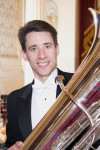The Fourth Valve tm is an up-close, shoot-from-the-hip interview series dedicated to musicians who play the tuba or euphonium. We at davidbrubeck.com are delighted and grateful to share the musical, professional and personal insights of some of the world’s great musicians and masters of low brass. The interview series was launched with an interview of Deanna Swoboda as a tribute to our first published article-an interview with Connie Weldon. For now, let’s just focus on tuba, and leave the fantastic euphoniums for another post. You wouldn’t believe how many terrific tuba interviews we have, so we’ll tell you: Craig Knox, Mike Roylance, Sergio Carolina, Beth Wiese, R. Winston Morris, Aaron Tindall, Aaron McCalla, Chitate Kagawa, Marty Erickson, Oystein Baadsvik, Don Harry, John Stevens, Jim Self, Beth Mitchell, John van Houten and Deanna Swoboda!Enjoy!
Craig Knox of the Pittsburgh Symphony, Center City Brass Quintet and The Curtis Institute WOWS “The Fourth Valve” tm.3. How do you conceive of articulation and explain it to your students? Do you adapt articulation from orchestral to chamber to solo situations?
I think of sound first, and articulation second. That is to say that I think a lot of beginning players rely too much on the tongue to start the note, sometimes resulting in a compressed burr of sound at the front of the note, followed by an unsupported tone. I also point out that a listener hearing a brass instrument has no expectation of hearing a “T” sound at the beginning of a note, any more than they would expect to hear that from a violin or timpani. What the listener wants to hear is a clarity and immediacy of tone at the beginning of the note.
Read more…
BSO Tubist Mike Roylance Braves “The Fourth Valve†tm, and the 2015 Blizzard! 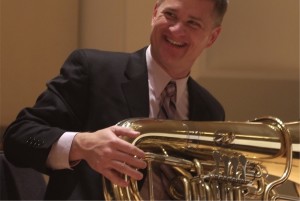 Many tubists have a broad based experience, but not often is it as deep and varied as that of Mike Roylance. As principal tubist in the BSO and professor at New England Conservatory and Boston University his virtuosity is noteworthy, and based on his technically demanding warm-up dubbed “THUNDERDOME”. But Roylance’s origins in what he refers to as “out door chamber music” (The Future Corps at The E. P. C O. T. Center of Walt Disney World), hearken back to a reservoir experience drawn on by many practicioners of “The Fourth Valve” tm- Drum and Bugle Corps. From DCI to Tanglewood, join Mike Roylance on the musical excursion of a lifetime. Enjoy!
Many tubists have a broad based experience, but not often is it as deep and varied as that of Mike Roylance. As principal tubist in the BSO and professor at New England Conservatory and Boston University his virtuosity is noteworthy, and based on his technically demanding warm-up dubbed “THUNDERDOME”. But Roylance’s origins in what he refers to as “out door chamber music” (The Future Corps at The E. P. C O. T. Center of Walt Disney World), hearken back to a reservoir experience drawn on by many practicioners of “The Fourth Valve” tm- Drum and Bugle Corps. From DCI to Tanglewood, join Mike Roylance on the musical excursion of a lifetime. Enjoy!
1. How do you conceive of, describe or imagine the ideal tuba sound?
Wow, that is a very explosive question.
I’m not sure if I can narrow down my ideal tuba sound to a few words.
My concept of sound is at the fore of every moment when I play the tuba. Depending on the circumstance, I might want to sound like a baritone or tenor singer. I may want to sound like the pedals of an organ or a bombastic a semi-truck’s horn. I may want to sound like a string or woodwind instrument. While, I’ll never sound exactly like any of these particular sounds, having that concept of sound in front of the production process helps to shape what comes out of the end of my bell. Read more…
Sergio Carolina Grooves “The Fourth Valveâ€
Sergio Carolina was raised in the century old band traditions of Portugal and has developed into a world class soloist who is equally at home with Bach, Funk and most everything in-between. The Fourth Valve sails the Atlantic to boogie with master tubist Sergio Carolina. Enjoy!

3. What is it about jazz that makes you want to play it? What are the most satisfying ways that you can imagine a tubist playing in a jazz group?
Since I was a little boy learning tuba to play on the wind band, some of my closest friends and I discovered jazz, funky, Dixieland and second lines bands like Louis Armstrong (and his Hot Five and Hot Seven), Bob Scobey Frisco Band, Dukes of Dixieland, The Dirty Dozen Brass Band, Rebirth Brass Band, Lester Bowie Brass Fantasy and Sam Pilafian’s Travelling Light.
We all started to catch on to this music, and wrote down on a paper some of these tunes. By making our own arrangements and starting to trying to understand how to phrase like them by spending thousand of hours listening and listening, imitating, trying to understand (so many hours, uffff!!!!)
Many of these friends are today professional musicians and I have been privileged to create bands and special projects with them!

I think that the most satisfying way that a tuba player can have playing in a jazz group would be to making the bass line, to imitate a double bass or electric band and make people forget that they are listening a tuba… Be a part of a great rhythm section with drums, guitar, piano, accordion or vibraphone it’s just amazing! Feeling that you are like the brain of the ensemble by knowing that the bass defines the tempo, harmony, style and controls the dynamic it’s just fabulous! Read more…
The Future is Here! Beth Wiese Schools “The Fourth Valve†tm
Beth Wiese is an award winning soloist, an accomplished orchestral player, and innovative chamber musician. A forward thinking entrepreneur, she is about to become Dr. Wiese, and takes a moment to reflect and look ahead.
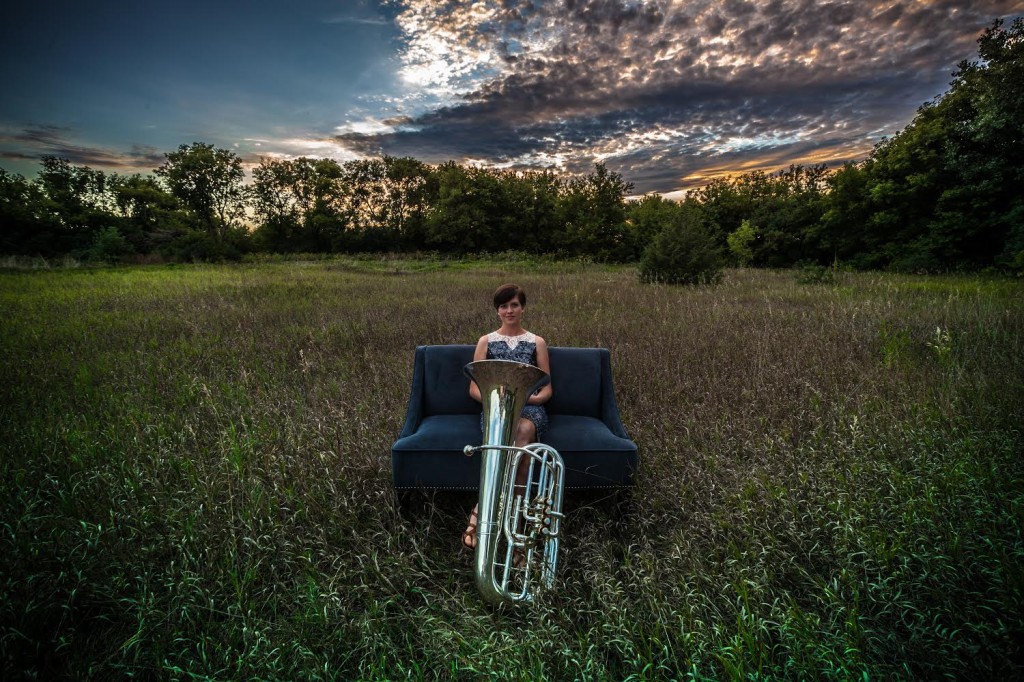
2. What helps you be more musically expressive?
Listening. Before I started playing the tuba, I played the violin and really developed a love for string repertoire — Brahms sextets, Mendelssohn trios and octet, Borodin quartets, Ravel, Debussy, Elgar…you get the idea. Whenever I hit a musical “road block,†or simply am struggling for inspiration, that’s where I turn. In great performances of those works, the phrasing is this beautiful balance between creativity and logic; it sounds completely fresh, but also like it couldn’t possibly be played any other way. That kind of conviction is inspiring and what I think we should all aspire to in our musical endeavors.
From a practical perspective, I have a few ideas that I enjoy using in my practicing. The first is playing with recordings — whether it be whatever I’m practicing or sight-reading. This is my favorite part of the day — sticking in a pair of headphones and playing along with the CSO/Martinon Nielsen 4 recording, or the Britten/Rostropovich recording of Schubert’s Arpeggione Sonata, or whatever else…it’s impossible to not be inspired musically, and to feel that musicality from such an intimate perspective is a great learning experience, in my opinion.
Lastly, thinking about music in the simplest units possible — literally note-by-note — helps me achieve an organic musical expression. I think there are only two types of notes — those that lead somewhere, or those that are arrivals. In effect, pick-ups or downbeats. Understanding how each note operates within a phrase gives it a sense of purpose, and can be a great musical exercise — especially with lyrical studies such as Bordogni-Rochut etudes, etc. As a former string player, I used to put bowings into my Conconne etudes, and that is a pretty similar idea, and a really fun exercise! Read more…
“Mr. Tuba Ensembleâ€, R. Winston Morris Rocks “The Fourth Valve†tm
 With dozens of albums, legions of successful alumni, Carnegie Hall recitals and countless premieres of new works and arrangements for tuba, The Tennessee Tech Tuba Ensemble (TTTE), has done everything a college group can possibly do-short of facing Ohio State in The Rose Bowl, and it wouldn’t be wise to bet against them! At the heart of the TTTE is the Sargent-General, a man of unequaled accomplishments in the realm of tuba ensembles, a founder of the Tubists Universal Brotherhood Association (T.U.B.A.),an accomplished tubist and legendary teacher and molder of young men and women, R. Winston Morris. It was he and Connie Weldon who shaped the modern ensemble, and Morris’ many contributions to tuba literature are unsurpassed. “The Fourth Valve” tm Rocks with Winston Morris!
With dozens of albums, legions of successful alumni, Carnegie Hall recitals and countless premieres of new works and arrangements for tuba, The Tennessee Tech Tuba Ensemble (TTTE), has done everything a college group can possibly do-short of facing Ohio State in The Rose Bowl, and it wouldn’t be wise to bet against them! At the heart of the TTTE is the Sargent-General, a man of unequaled accomplishments in the realm of tuba ensembles, a founder of the Tubists Universal Brotherhood Association (T.U.B.A.),an accomplished tubist and legendary teacher and molder of young men and women, R. Winston Morris. It was he and Connie Weldon who shaped the modern ensemble, and Morris’ many contributions to tuba literature are unsurpassed. “The Fourth Valve” tm Rocks with Winston Morris!
How do you conceive or describe the ideal tuba sound?
I can’t describe the ideal tuba sound. I can hear it… I can’t verbalize it! And of course there are many different “ideal†sounds. Is the tuba playing with the bass section? The horn section? The trombone section? Doubling bassoons? Playing jazz, playing quintet, playing an F, E flat, CC or BB flat tuba? Etc. This really identifies why we musicians are dealing with ART and not SCIENCE. I guess science could tell us a perfect tuba sound.
Of course the tuba “sound†is one of the most complicated brass wind generated “sounds†there is anyway. When you’re starting from the bottom there is much more potential for generating overtones/partials at different strengths than higher instruments.
After over 50 years of teaching and performing with virtually half the tuba/euphonium population on the planet and documenting most repertoire and recordings ever done for the tuba the answer is there is no simple answer. I STILL learn something virtually every time a student walks in my studio.
If there is anyone out there in brass land who thinks they have all the answers they are wrong! What works for one individual may well be the exact opposite of what “works†for someone else. I know many successful performers who are great but you would not have someone else emulated the way they play the horn because it simply would not work for someone with a different physical configuration which is a minor consideration relative to concept of sound. I’ve known players who could pick up a plastic Sousaphone and sound better than other players on a $25,000 state of the art brass instrument! Mind over matter really does exist!!!! Read more…
Aaron Tindall On “The Fourth Valve†tm
 Aaron Tindall is a rare tandem of a sensational tuba virtuoso and accomplished euphonium player; he is both an expressive chamber musician and a solid orchestral performer. He possesses the heart of a student and the reflection of a teacher. The Fourth Valve is doubly pleased to welcome Aaron Tindall to respond as for both-tuba and euphonium!!
Aaron Tindall is a rare tandem of a sensational tuba virtuoso and accomplished euphonium player; he is both an expressive chamber musician and a solid orchestral performer. He possesses the heart of a student and the reflection of a teacher. The Fourth Valve is doubly pleased to welcome Aaron Tindall to respond as for both-tuba and euphonium!!
6. What switches click in your mind and approach when playing orchestral music as opposed to solo repertoire?
I am all about consistency in everything that I do. When things are consistent, things are authoritative. When things are authoritative, people will LISTEN! The way you do anything, is the way you do everything. My goal is to be able to control the horn technically at an incredibly high level, so that when I see a phrase and sing it in my head, I can instantly and effortlessly relay that musical message to the listener. Knowing exactly how to control the instrument allows me to be free musically, and creates the ability to change my opinion about a phrase on a moment’s notice with the confidence that it will happen. It doesn’t really matter to me if a phrase is from an orchestral passage, or a ridiculous lick from a tuba concerto. I try to not think of orchestral playing and solo repertoire as being different from one another. What changes for me are the stylistic demands that a composer may ask a performer to make. At some points within music we are asked to be the leader, other times a follower, and at yet other times a collaborator, etc. This is true for both solo playing and orchestral playing. My job as a musician is to be able to effortlessly execute the phrasing and musical expressions that I want the listener to experience. Read more…
Aaron McCalla Shows “THE FOURTH VALVE†tm True Versatility with the Naples Phil.
The Naples Philharmonic does it all: from concert orchestral music to accompanying the Miami City Ballet when in Naples to pops and chamber music. Their tubist, Aaron McCalla, goes even further as a featured soloist, recitalist, rock musician, and solo tuba in the virtuoso Brass Miami. McCallastudied at Southern Methodist University, the Juilliard School and the New England Conservatory and has held the position of principal tuba for the Colorado (Denver) Symphony Orchestra. His occasional performances include the New York Philharmonic, the Boston, Albany, Vermont, Rhode Island, Jacksonville symphonies and the Boston Pops. In addition to his orchestral duties, McCalla is a member of the band LNE and performs to packed houses throughout Central America.From Tanglewood to funk, McCalla has a the appropriate bass line, and davidbrubeck.com is delighted to host him in “The Fourth Valve” tm.
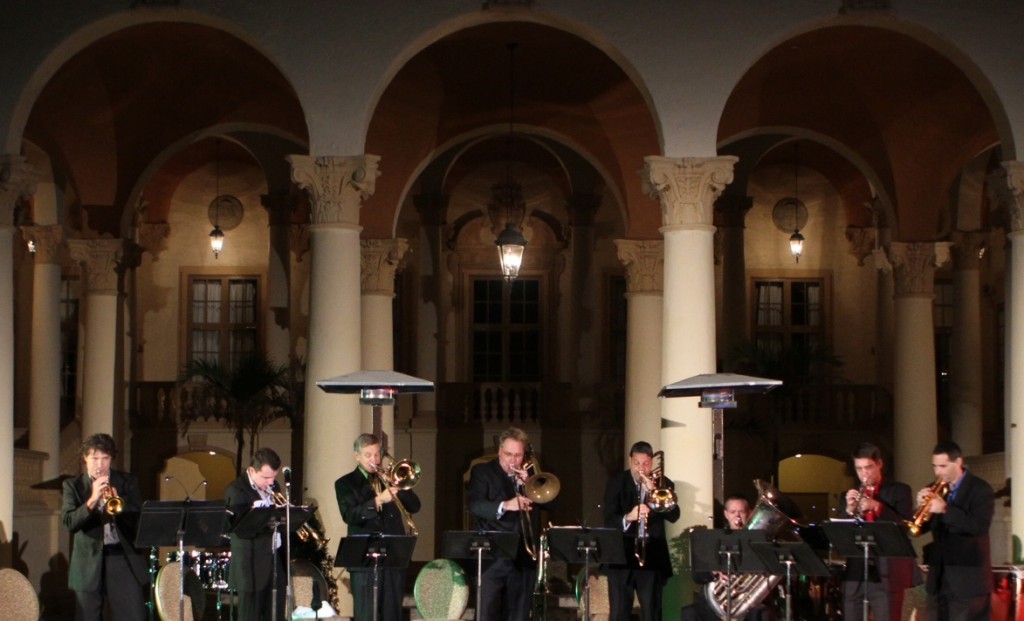
1. Breathing is key to wind instruments, none more so than the tuba. Can you discuss your journey of awakening with regards to breathing. What did your teachers emphasize, and what have you discovered on your own?
Breathing is absolutely key. I have to be honest though, I have never thought too much about it outside of making sure that I am being efficient. My first teacher in college, Matt Good, was probably my biggest influence. Until I met him, I didn’t know that there are many different types of breaths you have to master. Every breath is different but has to be as efficient as any other. I have always loved sports and running. I feel like the breathing required for sprinting or swimming is not exactly like that required for tuba playing, but it helps tuba in every way in that it requires you to be able to pull in maximum volume of air. When swimming laps, I am not analyzing my breathing, I am only thinking, “I need a breath!†So, when it comes to tuba I just try to take as much in as I would in sports but in a relaxed and musically appropriate way. In the end, I try to not paralyze myself with over analysis of something I have been doing since birth. Read more…
Chitate Kagawa Invites “The Fourth Valve†tm to Japan
Chitate Kagawa performed as the principal tubist of the Sapporo Symphony until his retirement in 2004. In 2010 he was awarded the ITEA Lifetime Achievement Award, and has been a strong advocate for the tuba throughout Japan as host of ITEC Saporo in 1990 and with the Hakkaido Euphonium and Tuba Association. A former student of Harvey Phillips, “The Fourth Valve” tm, Caught up with Mr. Kagawa at the 2014 ITEC at Indiana University, where he had been a student as a young man. It was evident that none of his enthusiasm for music, the tuba, or Mr. Phillips had waned. We are delighted to host Chitate Kagawa for “The Fourth Valve”.
 1. How do you imagine an ideal tuba sound?
1. How do you imagine an ideal tuba sound?
When an excellent singer sings a soft aria with an orchestra, the voice
carries great distances very naturally without having great power, even if it is soft voice. We listen for a very soft tuba sound on the stage, which seems well-balanced with other instruments, but most of the time we can’t hear the
tuba sounds at the seats. This means that this tuba sound doesn’t have enough core,but it is soft. Some say the tuba part should be mixed with the contra
basses, I agree with this concept, but I can’t agree those who say
the tuba should be always be melted in the contra basses. When we listen the
brilliant tuba in the orchestra concert, asa solo performer, or in the
brass quintet, some may feel that the tuba is the most interesting instrument. It is natural, as players, that we listen many types of sound colors produced by a variety of instruments or mouthpieces, and diverse playing techniques which are often quite different from one another. As tubists, we
should listen to many excellent performances, by not only tuba, but
also cello,voice, wood wind etc. This way, we can image an ideal sound on
tuba little by little. We should have good tonal image or ideal and practice every day toward the ideal tuba sound quality and not simply be shouldn’t satisfy present our sounds. Read more…
Marty Erickson’s Design for “The Fourth Valve†tm
 Marty Erickson served as a concerto soloist with the Navy Band, is an accomplished jazz man with three jazz cds to his credit, and presently finds himself utterly devoted to chamber music (with the improvising Millenium Brass)and to his students. A thinking man’s tubist, Erickson draws upon his rich musical life to explore the chamber music ramifications of the euphonium and the tuba, and to contemplate the future young musicians on those instruments might encounter. Though rooted in firm foundations which reach back to Leonard B. Falcone, Erickson has consistently forged beyond convention. Bold, fresh and visionary is Marty Erickson’s design for “The Fourth Valve” tm.
Marty Erickson served as a concerto soloist with the Navy Band, is an accomplished jazz man with three jazz cds to his credit, and presently finds himself utterly devoted to chamber music (with the improvising Millenium Brass)and to his students. A thinking man’s tubist, Erickson draws upon his rich musical life to explore the chamber music ramifications of the euphonium and the tuba, and to contemplate the future young musicians on those instruments might encounter. Though rooted in firm foundations which reach back to Leonard B. Falcone, Erickson has consistently forged beyond convention. Bold, fresh and visionary is Marty Erickson’s design for “The Fourth Valve” tm.
3. Why is the Eb tuba often overlooked?
What does it do better than other tubas? Naturally, I am a bit prejudiced in this category, since I have championed the Eb tuba for many years and love my (shameless plug) Willson 3400 Eb tuba. The primary reasons I have found that this works for me the following:
–Versatile solo instrument
–My favorite brass quintet instrument because of the way it blends with the trumpets, horn
and trombone and the Eb enjoys a robust low range that many smaller F tubas can find
challenging below the staff
–It IS one the brass band chair instruments of course
–Liked using it to double the BBb or even the CC tubas in the concert band as it tends to
fill out the middle range in much the same way it is used in the brass band
–Surprise! It was an awesome Opera tuba. When I performed several jobs with the Baltimore
Opera Orchestra (sadly now defunct), there were many comments from the conductors
and the string players about how they appreciated the full sound without feeling “over-
powered AND; string bassists and cellists cited it was easier to tune passages. Read more…
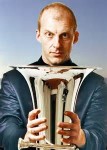 Oystein Baadsvik, the great international tuba soloist, drops by “The Fourth Valve” tm and blows our minds!
Oystein Baadsvik, the great international tuba soloist, drops by “The Fourth Valve” tm and blows our minds!
8. Although nurtured by and (an integral part of) the brass/wind community, your opportunities have taken you into broader circles of musicians, and even beyond the circle of musicians to artists and cultural figures. What have you discovered as a man of artistic temperament in your travels and encounters?
Rimsky Korsakov describes the different orchestral instruments in his book about orchestration.
He describes the brass as being great for signals and dramatic highlights. When he wants richness of colors and beautiful melodies he turns to the strings, sometimes the woodwinds.
These definitions are very common amongst 90% of the composers that are played by modern orchestras.
Modern brass teaching is mostly about making the student ready for an orchestra gig and less about creating soloists. Therefore, it would be strange if the teacher did not focus on this demand for “signals and dramatic highlights” in the orchestra, and less on exploring colors and melodic playing. Read more…
 Don Harry Enlivens “The Fourth Valve”tm
Don Harry Enlivens “The Fourth Valve”tm
An illustrious teacher in his own right, Harry seems to embody the Bill Bell-Harvey Phillips line of tuba excellence in his current duties as Eastman faculty, member of the Eastman Faculty Brass, tubist with the Buffalo Philharmonic and as a soloist. “The Fourth Valve†tm is overjoyed to enjoy the enlivened discussion with such a distinguished guest.
1. How do you conceive of, describe or imagine the ideal tuba sound?
There is no one tuba sound except in the practice zone; the literature determines the color. Sometimes Read more…
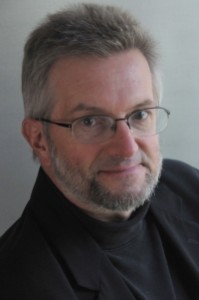 John Stevens Tackles “The Fourth Valve†tm
John Stevens Tackles “The Fourth Valve†tm
A bracelet inscribed with the motto “Been there, done that!†was said to be among the possessions most prized by the then recently retired opera star Beverly Sills. When asked if she might not miss some of the excitement of her former career, she was reminded of her accomplishment by the response inscribed on the bracelet.
While comparing a soprano to a tubist may seem a sonic stretch to some, few things could be more apt than the motto of Sills’ bracelet in describing the recent retirement of tubist, composer and educator John Stevens.
From a solo feature in Broadway’s “Barnumâ€, to performances with the top Brass Quintets and more-tubist John Stevens has “been thereâ€. As a celebrated professor at distinguished universities, and a composer of a rich body of work which includes a concerto for tuba commissioned by the Chicago Symphony Orchestra-John Stevens has “done thatâ€! “The Fourth Valve†tm is privileged to present the amazing John Stevens as the first respondent of our second set of four interviews on davidbrubeck.com Read more…
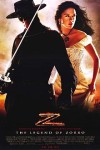 Jim Self Solos on “The Fourth Valve” tm No. 4, Tuba Euphonium Interview Series,
Jim Self Solos on “The Fourth Valve” tm No. 4, Tuba Euphonium Interview Series,
You would be hard pressed to find many musicians on ANY instrument as versatile and talented as tubist Jim Self. From top Hollywood studio dates, to playing principal tuba in The Hollywood Bowl Orchestra, playing the John Williams Tuba Concerto under the composer’s baton to being nominated by DOWNBEAT, Jim Self is remarkable and unique. His endeavors stretch to more than a dozen solo recordings and numerous compositions as well. What would you expect from the protege of Harvey Phillips and Tommy Johnson? Read more…

Los Angeles Tuba Freelancer, Educator, and Kanstul Artist Beth Mitchell Beth Mitchell is an active Los Angeles freelancer, having worked with the Los Angeles Philharmonic, and Orange County Philharmonic Societies, the Los Angeles Zipper Orchestra, and many other arts groups giving concerts, masterclasses and numerous solo and chamber recitals around southern California.”The Fourth Valve” tm No. 3
Read more…
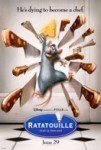
Hollywood Recording Legend, Tubist John Van Houten
“The Fourth Valve” tm No. 2
Ranked among the first call tubists in the top recording city of Los Angeles, John Van Houten is no stranger to playing on a variety of instruments and in a number of different styles. Best known as a tubist, contractor & orchestra manager, and teacher, Van Houten has performed on several major television shows and popular movie soundtracks including “Family Guyâ€, “The Simpsonsâ€, Hulk, Pirates of the Caribbean, Star Trek, the award winning UP, and Ratatouille. He has taught at prestigious institutions throughout Southern California, and has performed with some of the finest musicians in the world. davidbrubeck.com is delighted to catch up with John Van Houten for the second installment of “The Fourth Valveâ€, tm.
Read more…
ASU Professor of Tuba and
 Former Solo Tuba of The Dallas Brass,
Former Solo Tuba of The Dallas Brass,
“The Fourth Valve” tm No. 1, Deanna Swobodafirst came to national prominence as tubist with the Dallas Brass. Her rock solid time and sensitive phrasing seemed effortless as she anchored the world-famous brass. Swoboda subsequently served on the music faculty of Western Michigan University and has recently accepted a faculty position at Arizona State University.Read more…



